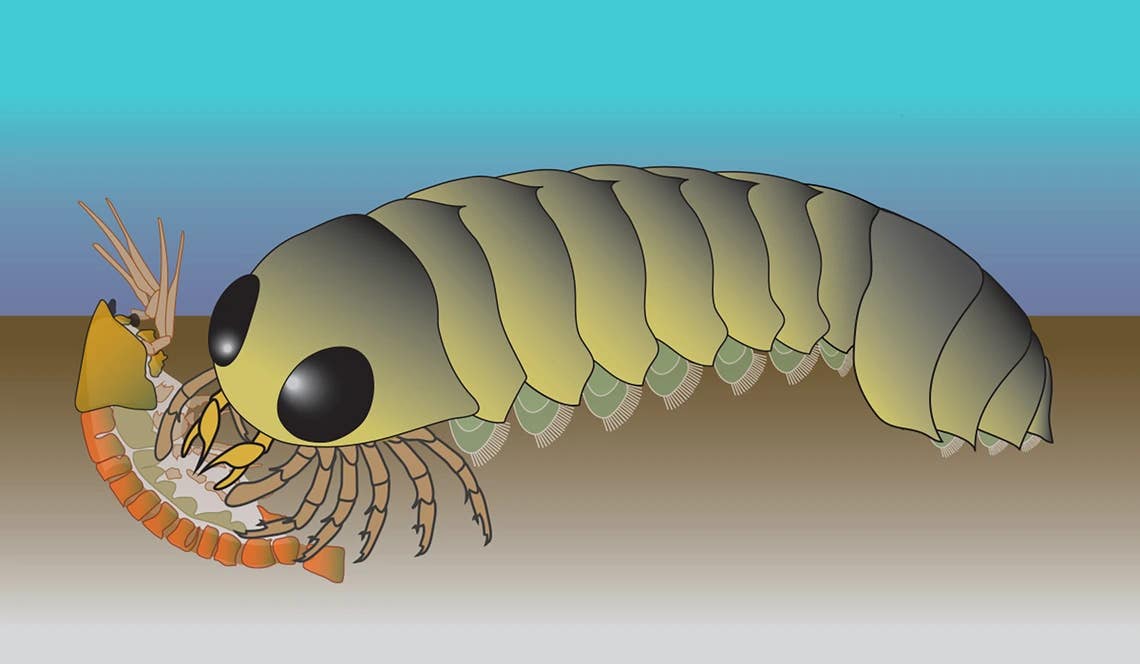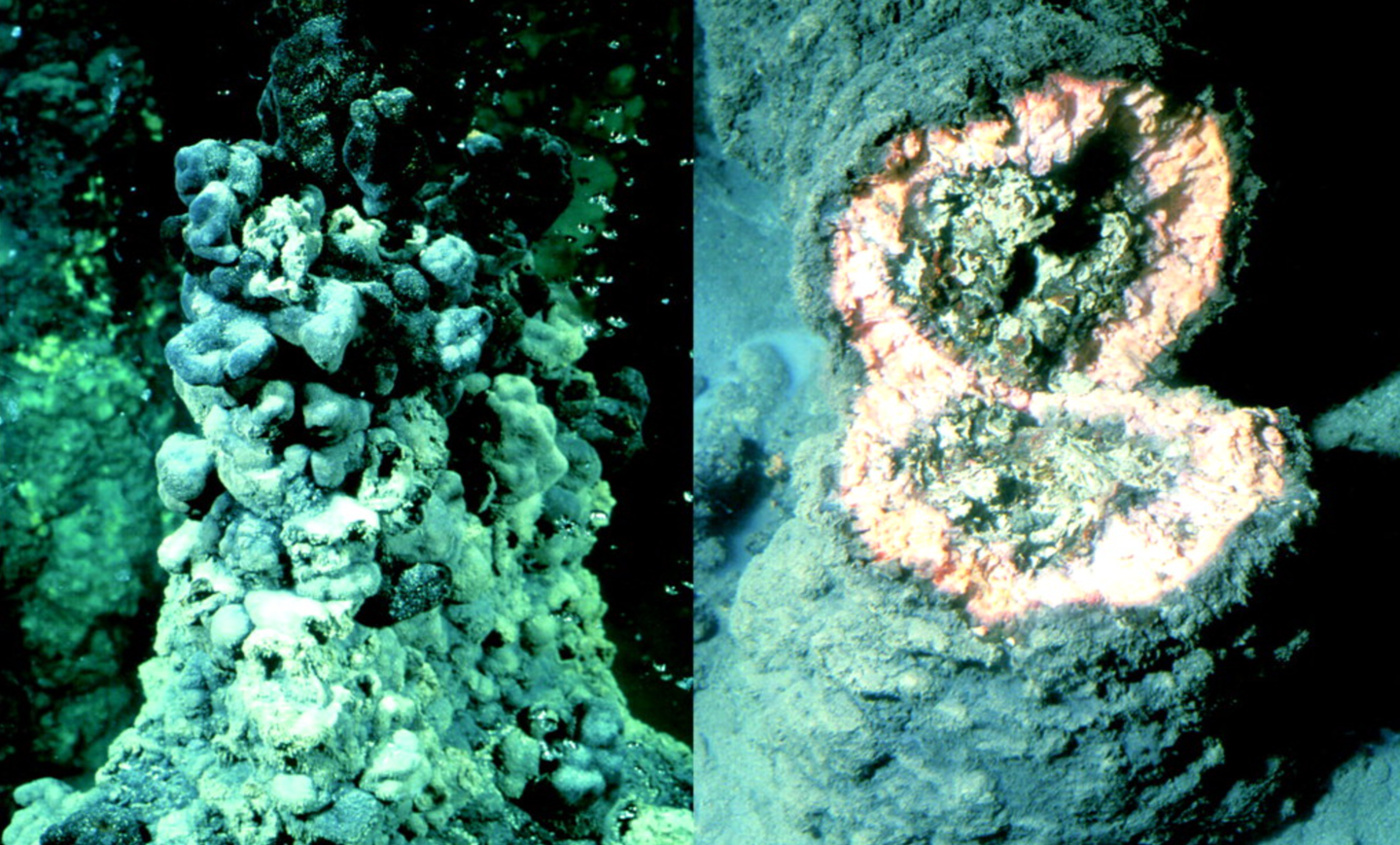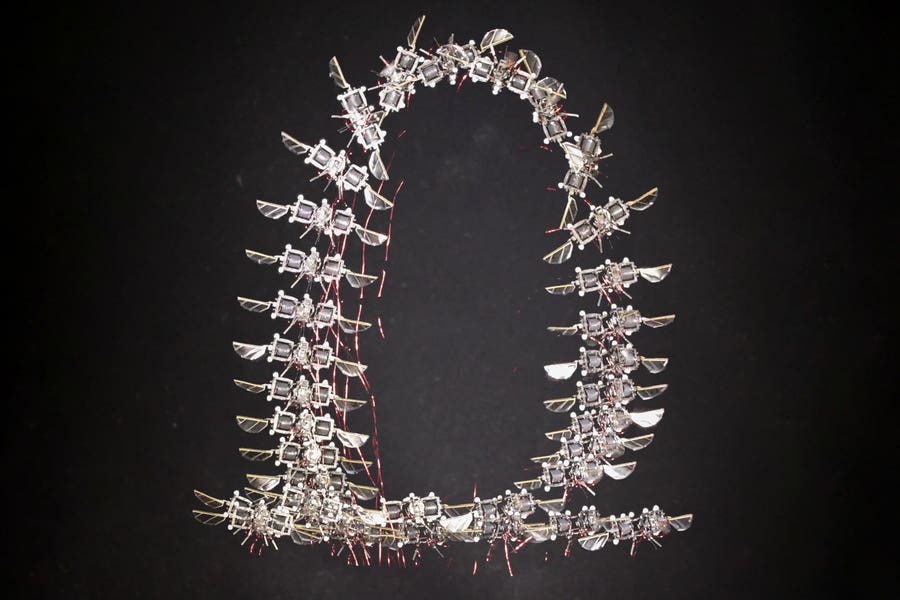Ancient fossil reveals spiders and their relatives originated in the ocean, not on land
A fossil brain from 500 million years ago shows that spiders and arachnids evolved in the ocean, not on land.

Illustration of what the Mollisonia animal would have looked like at the time it lived, more than 500 million years ago. (CREDIT: Nick Strausfeld)
Over 500 million years ago, a small marine creature swam through Cambrian waters. Its name: Mollisonia symmetrica. Long thought to be a distant relative of modern horseshoe crabs, new research now places this creature on a different branch of the evolutionary tree. Its brain and nervous system suggest it’s more closely linked to spiders and scorpions, shaking long-held beliefs about arachnid evolution.
Fossil Clues from the Cambrian
The Cambrian period marks a time of intense diversification in animal life, especially among arthropods. This group includes modern insects, crustaceans, and arachnids. Chelicerates—one arthropod subgroup—include spiders, ticks, and horseshoe crabs.
Fossils like Mollisonia and its relative Sanctacaris have long been considered early members of this group. They share features like a segmented body with a front prosoma (head and thorax) covered by a shell, and a rear trunk known as the opisthosoma. These appendages were thought to aid in swimming and breathing.
However, the placement of Mollisonia in the arthropod family tree has been debated. Earlier studies described it as a “stem chelicerate,” a primitive form even older than the ancestors of horseshoe crabs. But a new look at its nervous system tells a different story.
A Brain Like No Other
The new study, published in Current Biology, was led by neuroscientist Nicholas Strausfeld of the University of Arizona. Strausfeld and colleagues used light microscopy to closely examine the fossil specimen of Mollisonia symmetrica, housed at the Harvard Museum of Comparative Zoology.
This rare fossil, first described as Houghtonites gracilis, is now assigned to the family Mollisoniidae. Despite being over half a billion years old, the fossil’s soft tissues, including its brain, were surprisingly well preserved.
Related Stories
- Ancient sea predator had three-eyes and breathed through its rear
- 125 million-year-old giant venomous scorpion fossil unearthed in China
- 520 million-year-old fossil solves important evolutionary mystery
Under varying light and magnification, the team identified distinct neural structures. What they found was striking. Mollisonia’s prosoma contained a radiating pattern of segmental neuromeres—clusters of neurons found in modern spiders. It also had a pair of oval neuropils connected to chelicerae, or pincer-like claws. These features match the brain organization of living arachnids like scorpions and spiders, not crustaceans or horseshoe crabs.
Even more unusual was the brain’s layout. In insects and crustaceans, brain structures run from front to back. Mollisonia’s brain, like a spider’s, shows a flipped arrangement. Its deutocerebrum—the brain region connecting to chelicerae—sits at the front, while other brain parts curve backward. This reversal likely streamlines motor control and decision-making in predatory behavior.
Ancestral Arachnid from the Ocean
These findings challenge the assumption that arachnids became diverse only after moving onto land. Instead, they point to a marine origin for the group. Co-author Frank Hirth of King’s College London believes this reversal in brain layout gave arachnids evolutionary advantages. “This is a major step in evolution,” said Hirth, “which appears to be exclusive to arachnids.” He adds that this layout likely enhances speed, stealth, and coordination—traits useful for web building and hunting.
Mollisonia, it turns out, had more in common with a spider than a crab. Its body, split into a broad prosoma and a segmented opisthosoma, resembles that of a scorpion. It had at least six pairs of limbs used for crawling and grabbing prey. One related species, M. plenovenatrix, clearly showed robust chelicerae at the front of its head. Mollisonia symmetrica shares this trait, reinforcing its placement within early arachnids.
The study’s statistical analysis compared over 100 neural traits across living and extinct arthropods. Co-author David Andrew, formerly of Strausfeld’s lab and now at Lycoming College, used these traits to run phylogenetic models. The data placed Mollisonia close to spiders and scorpions, not near horseshoe crabs. That suggests Mollisonia's descendants likely led to many of the arachnids we know today—sun spiders, whip scorpions, and others.
Fossil Imaging Breakthroughs
The research also highlights advances in fossil imaging. Although many Cambrian fossils are flattened and blurry, Mollisonia’s part and counterpart slabs offered a rare chance to see fine internal structures. Using multiple light sources and focus layers, the team reconstructed detailed images of the brain. These were matched against neural patterns in modern arachnids, revealing one of the earliest examples of arachnid brain anatomy.
Tagmatization—the division of body regions into specialized segments—is clearly seen in Mollisonia. Its prosoma contained both eyes and brain structures. Visual tracts from its principal eyes extended toward the rear, aligning with the prosocerebral area. This unusual fold mirrors what is seen in spiders, where neural circuits must connect distant sensory organs and movement centers in tight coordination.
Unlike other Cambrian arthropods like Leanchoilia or Alalcomenaeus, which lack clear body division and show Limulus-like brains, Mollisonia reveals a distinctly arachnid design. That makes it a key piece in understanding when and how this successful group took shape.
Changing the Evolution Story
Arachnids have walked the Earth for at least 400 million years. Fossils suggested they were strictly land-based, but Mollisonia tells a deeper story. According to Strausfeld, early arachnids may have fed on ancient insects and millipedes that also made the leap to land. This interaction could have shaped major adaptations—like wings in insects as a defense against spider predation.
“Being able to fly gives you a serious advantage when you're being pursued by a spider,” said Strausfeld. But even with flight, countless insects still fall prey to spider webs every day.
Unfortunately, other Mollisonia-like fossils don’t preserve the brain well enough for similar studies. Still, if they shared the same neural layout, their descendants might have evolved into the wide range of land-dwelling arachnids seen today.
“This is the first neural evidence placing an ancient marine creature as the ancestor of land arachnids,” Strausfeld said. “It turns our understanding of arachnid origins upside down.”
Research findings are available online in the journal Current Biology.
Note: The article above provided above by The Brighter Side of News.
Like these kind of feel good stories? Get The Brighter Side of News' newsletter.



